Learn to Love Open-Water Swimming
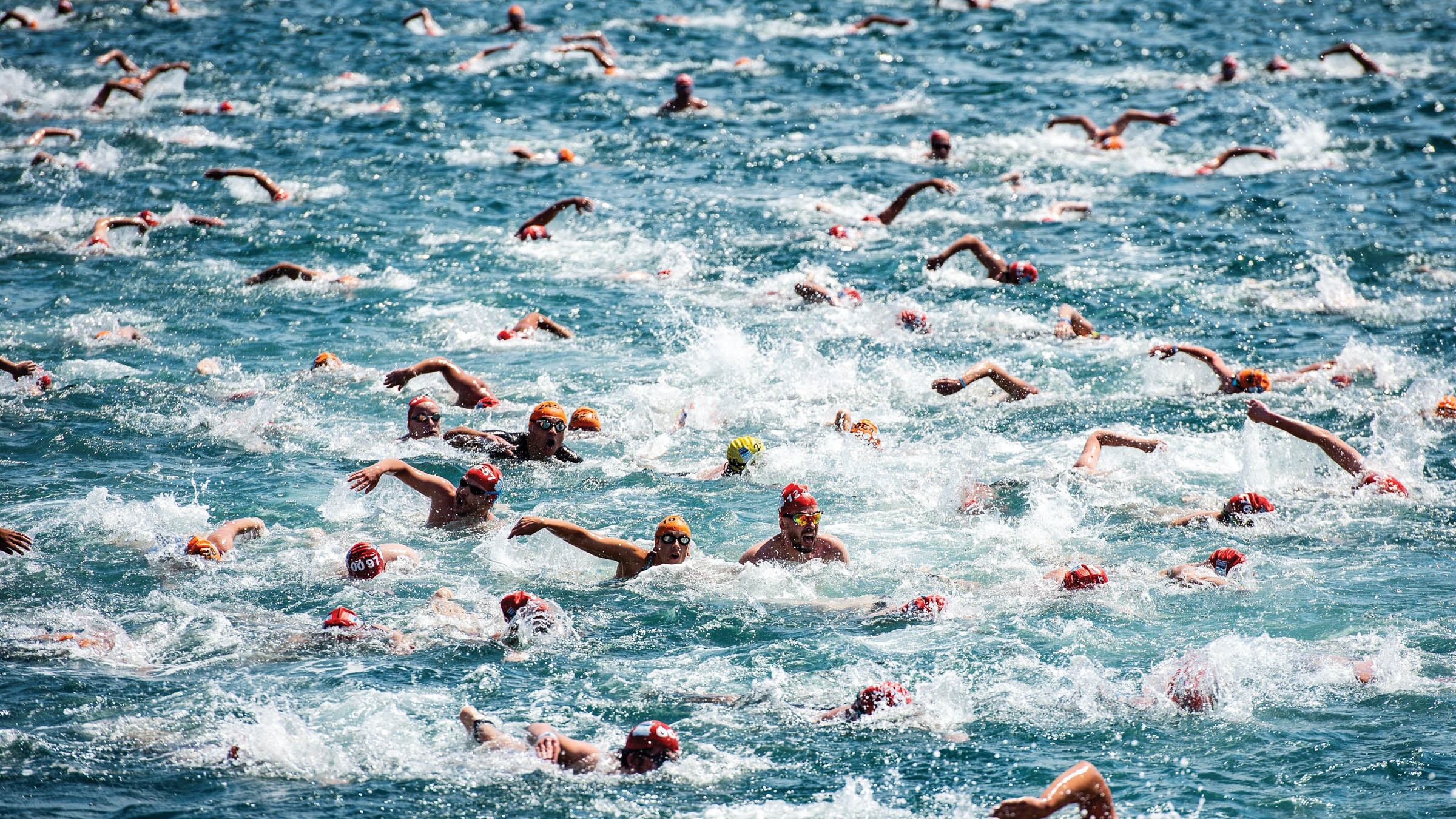
Photo: Getty Images / Yasin Akgul
Triathlons almost always take place in open water. Yet, triathletes tend to train in pools. The skills needed in one environment vary hugely from the other, often causing many athletes to feel anxious and woefully underprepared. Executing a strong swim without overly taxing your body (and mind) is an important part of setting you up for a successful race. Unfortunately, triathletes often fail to maximize their potential simply because they are underequipped to deal with open-water swim conditions. Triathlon swim coach Gerry Rodrigues—who has been working with triathletes since the early 1980s—recognized this almost immediately.
“When I see photos from the swim start of triathlon races, it never comes as a surprise to me to see so many anxious faces,” he says. “I can tell what many of these athletes are thinking: ‘Just get this swim over with and let me get to my bike.’
“It doesn’t need to be like that. You can and will enjoy all three parts of your race if you learn the right open-water swimming skills and hone them in training. It will take some hard work and commitment, but you can be prepared. I want you to stand on the start line of any race anywhere in the world feeling confident you can handle anything the competition and conditions throw at you.”
Rodrigues, who is the founder and owner of the Tower 26 swim program in Los Angeles, California, has helped thousands of athletes do exactly this and become “race ready,” providing them with the all-important skills they need to perform—and be confident—in open water.
The most important thing, he says, is to acknowledge the significant variables that make open water different from the pool: the cold, strong currents, high surf, foggy conditions, murky water, and marine life—to name a few.
“The process of moving from fear to familiarity requires frequent preparation. You might well have a number of fears about open-water swimming—and most people do,” says Rodrigues. Even though he’s been swimming in open water since he was a youngster, he still gets nervous too. But practice makes perfect. “Familiarity breeds comfort, and with adequate preparation, comfort brings confidence,” he says.
In addition to recognizing what’s different about the ocean or lake, you also need to feel comfortable and confident with beach starts, in-water starts, swimming in close proximity with others (often with physical contact), turning around buoys, drafting, sighting, dolphin diving, and exiting. Not all of these skills must be learned or always practiced in open water—but they do need to be learned and practiced. Simply swimming up and down in a pool, without including some or all of these things, is not setting you up for success come race day.
The good news is that acquiring the necessary skills and becoming familiar with the discomforts does not need to be complicated. Even if you have limited access to open water, you can include most of the key skills in your training in the pool and then transfer them to open water.
“Most athletes can learn a new skill if they practice it 10 times consistently over three weeks,” Rodrigues says, though that timeline can vary with each athlete’s ability. In early May, during the skill building phase of training, he typically begins introducing these skills into pool workouts at Tower 26. That allows athletes to inject many of the key ingredients of open-water swimming and racing into their regular workouts: endurance, skill, and power, as well as the basic mechanics of proper swimming. He then adds in the many specifics of open water: sighting, drafting, pacing, turning, entries and exits, handling different water and air temperatures, currents, and marine life.
Check out those key skills below—and how best to practice them when you have access to a pool—excerpted from Triathlon Swimming, available from VeloPress this summer.
Open-Water Skills
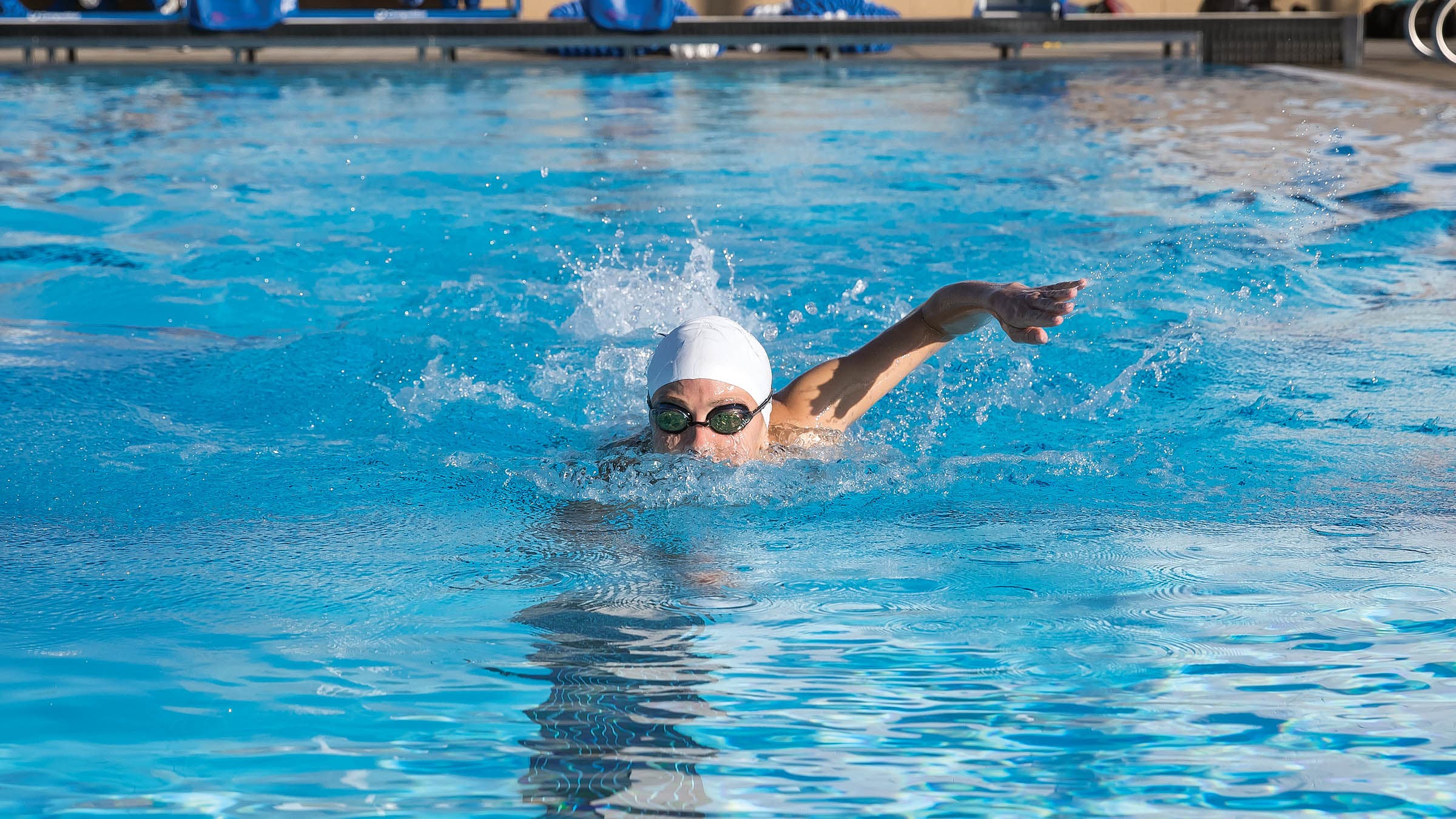
Sighting
Perhaps the most important skill for open-water swimming—good, effective sighting can mean the difference between swimming the actual course or adding on extra yardage! Rodrigues teaches the sight-and-breathe method which, with enough practice, requires the least energy to incorporate into your stroke. While sighting frequency can change, ideally you would sight every six strokes.
How-To
If you breathe to your right, start lifting your head as your left hand is exiting the water. As your left hand finishes its stroke and your arm is being lifted out of the water, there is a slight lift of the left side of your body—your elbow and arm are coming out of the water—use that moment to lift your head. As your left arm starts to come over and around, your head lifts, and your eyes, nose, and sometimes mouth should clear the water line. Lift your head just enough to capture a visual “snapshot” of information before your left hand re-enters the water and your head turns to the right to capture a breath as normal. This should not be a mechanical movement but a smooth, fluid one that takes place in just a fraction of a second: lift, sight, breathe, lift, sight, breathe.
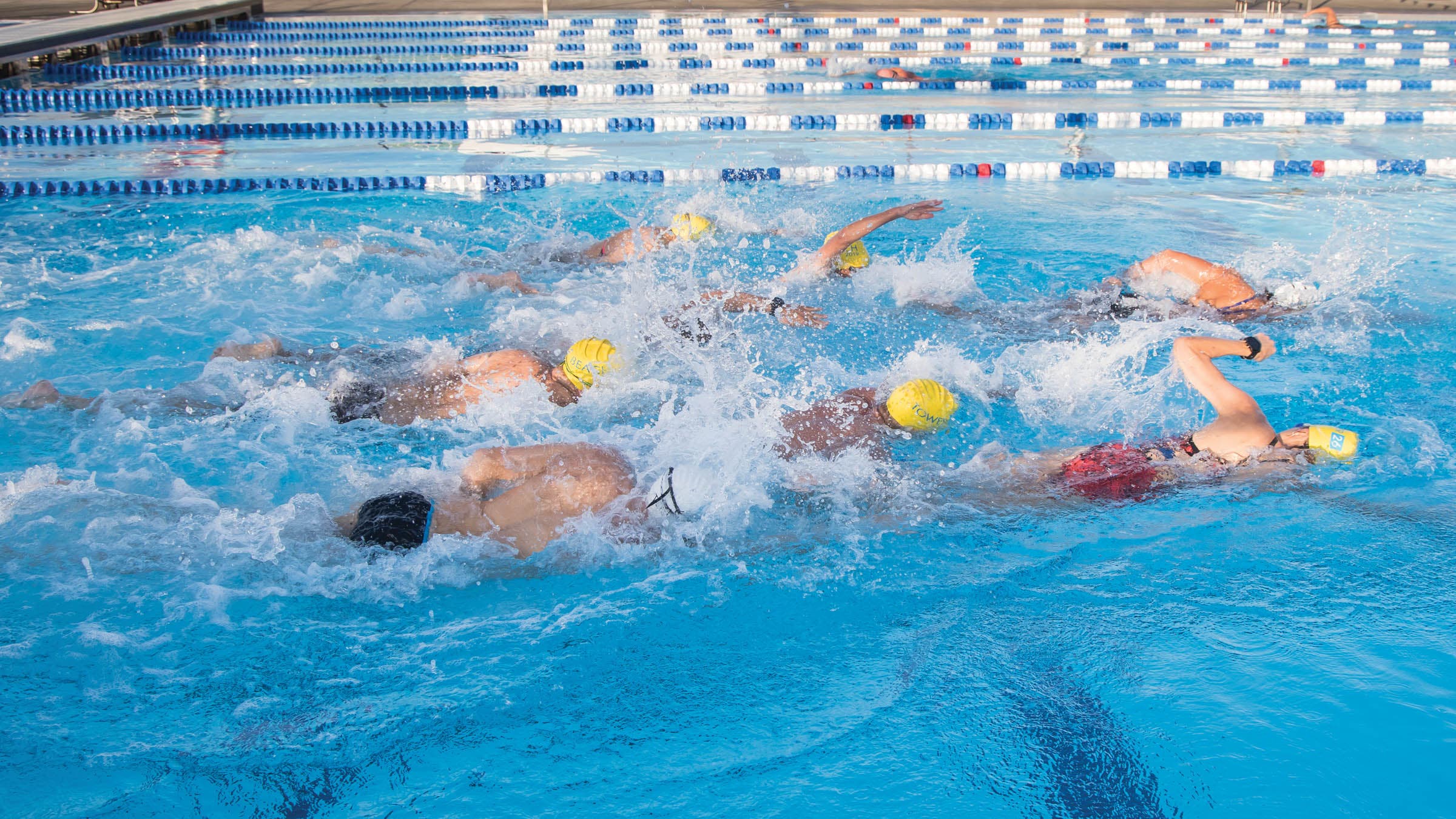
Pack Swimming
Pool workouts are usually very orderly, and most pool swimmers strictly adhere to lane etiquette—but when it comes to open-water swimming, all bets are off. It is not uncommon to hear triathletes’ war stories from swim start lines, but contact is usually unintentional.
“It is the result of a lot of highly energized, adrenalized competitors all vying for space in extremely close quarters. There is little you can do about this, but what you can do is get familiar with it and learn to change your mindset so you are less reactive when you do experience physical contact—and more proactive about seeking open space,” says Rodrigues.
How-To
Getting familiar with pack swimming can be easily practiced in the pool by removing the lane lines and getting some friends to swim with you.
“We might put 10 or 12 swimmers in one lane, positioning them in three rows,” he says. “We execute a lot of 25-yard intervals like this, with the swimmers switching positions after two or three reps so they know what it’s like to have people all around them.”
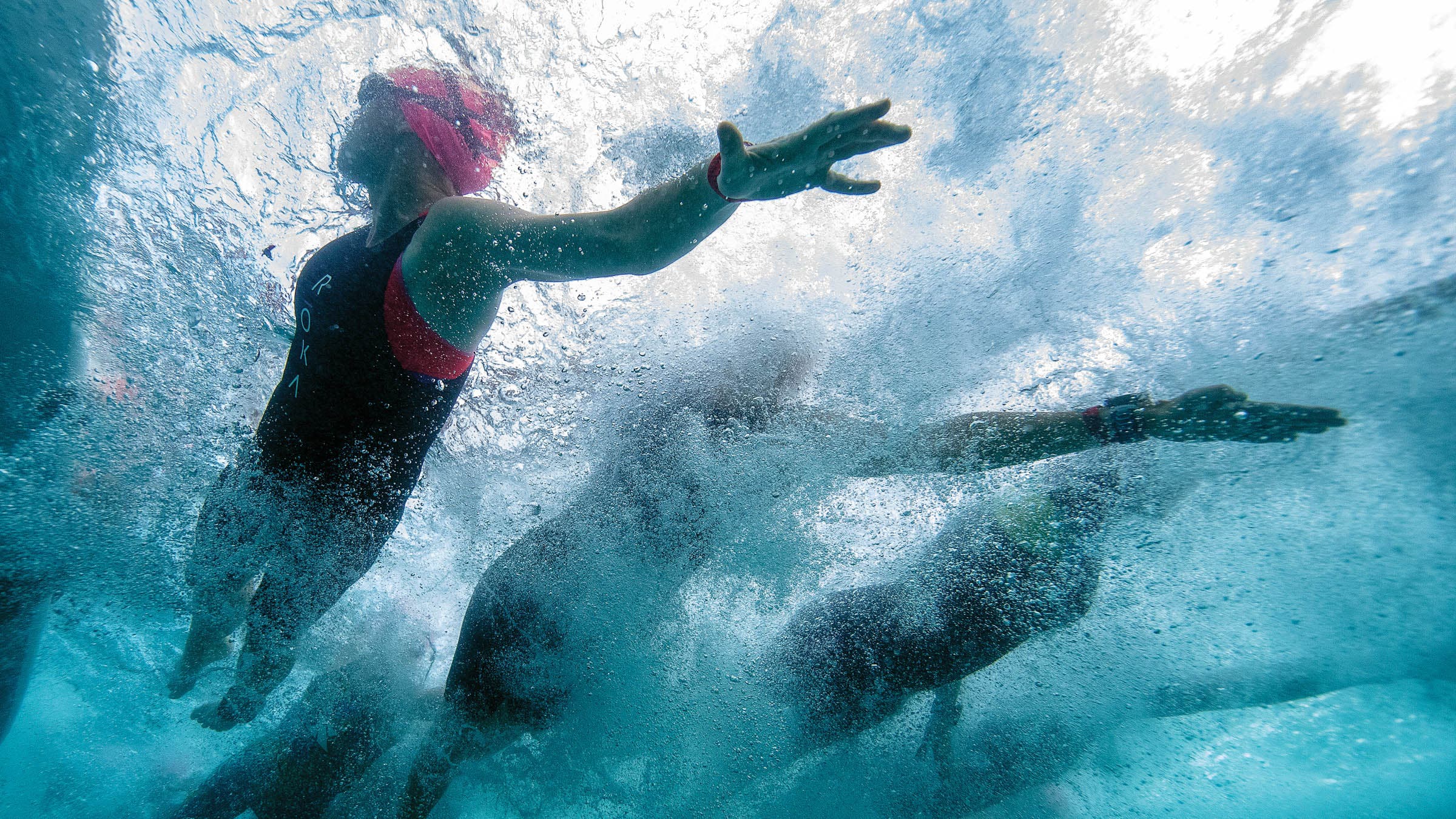
Drafting
While not legal in the bike leg of a triathlon, drafting is essential to a good swim split. “It is estimated that drafting just off the feet of the swimmer in front will yield about a 3% saving in energy,” says Rodrigues. “Drafting just off the hip yields about a 7% energy saving, but this position can be harder to attain. Many athletes won’t like you being there, not least because it gives them the feeling of being sucked back while you slingshot forward.” The key to drafting is knowing when it can be beneficial—and when it is not. The benefits depreciate significantly for athletes swimming over 1:30 per 100 yards, usually because these swimmers lack the navigational skills, so you run the risk of swimming off-course while following them.
How-To
The most commonly practiced approach is swimming with your fingertips as close as possible to the feet in front of you. But continually tapping those feet can become incredibly annoying for the swimmer in front and you could find yourself getting a few short, sharp kicks to deter you. Best practice? Stay there and make as little contact as possible. Successfully drafting off the hip requires continued practice in training to get it right in racing.

Pacelining
This is the swimming version of the drafting you commonly see in cycling races, in which athletes position themselves in a single line, one behind the other, with the lead athlete doing the bulk of the work. Athletes sitting behind in second, third, fourth, and so on, are enjoying the free speed while putting out significantly less energy. “We practice this a lot in the pool, usually with four athletes all swimming one behind the other and switching the lead every 50 or 100. Only after you’ve done it a few times do you have the “a-ha” moment about “sitting in” and staying on the swimmer’s feet in front of you,” says Rodrigues.
How-To
Line up one behind the other, pushing off the wall in quick succession and switching out the lead every 50 or 100. Stay as close as possible to the swimmer in front of you, keeping your fingertips close to their feet to gain all of the drafting benefits (without tapping their toes too much and annoying them). At Tower 26, Rodrigues likes to build sighting into these paceline exercises too, to make great race simulation practice. Practice pacelining with two to four athletes of similar speed for the greatest benefits—and even consider doing this in a race (with training buddies) if you can.
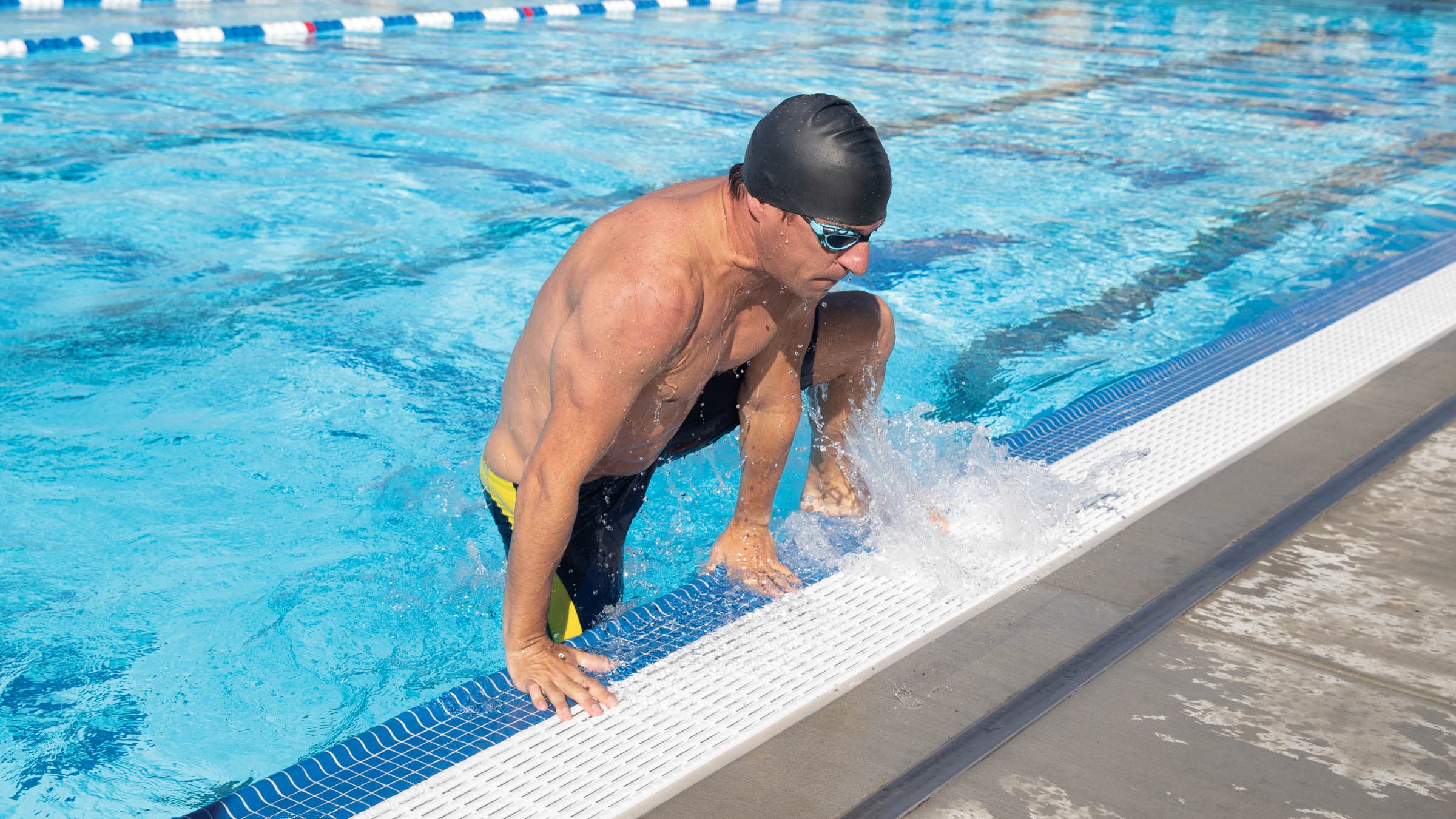
Deck-Ups
Many Tower 26 athletes love to hate deck-ups, but Rodrigues has been including them in his workouts for years. Deck-ups at the pool are a perfect way to simulate the heart rate spike you experience as you exit the water when transitioning from swim to bike. It also lets you get some basic T1 practice without having to set up a transition zone. During the swim section of a triathlon, you spend the entire time horizontal in the water, so when it comes time to exit the water, you might experience a blood rush—in fact, some people feel lightheaded or dizzy. Deck-ups prepare you for this feeling.
How-To
At the end of your interval, touch the wall, climb out of the water immediately, and stand up on the pool deck. Run for about 10 seconds, and then dive back into the water to begin your next rep. (If the pool where you train does not allow running on the deck, you can stand and jog on the spot.) During Tower 26’s open-water skill-building phase, deck-ups are often included as part of the warm-up or pre-main set; for example, 800 easy swim with a deck-up after every 100. As the race season progresses, deck-ups are built into almost every main swim set.
Pool Workout: Race Simulation
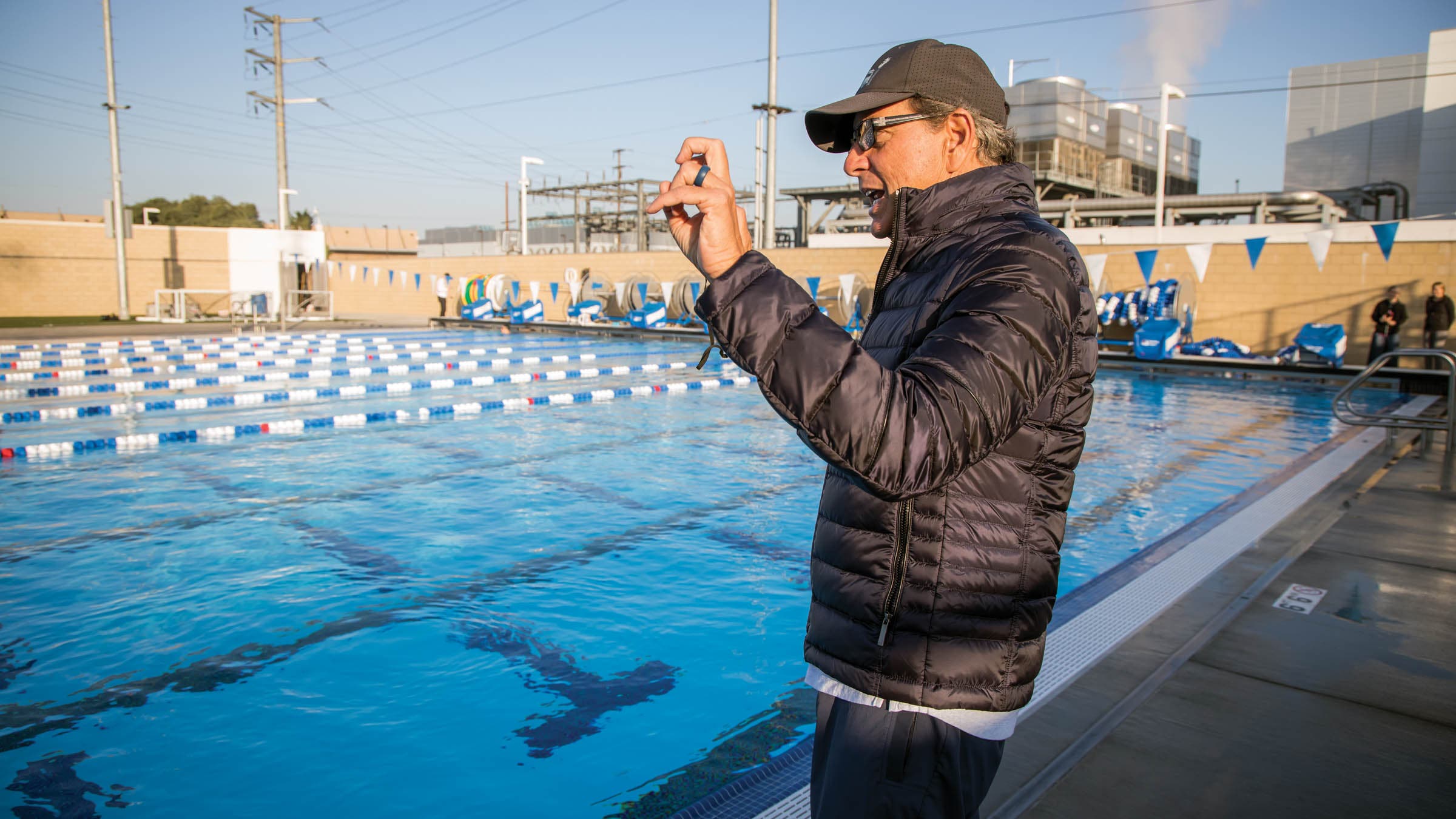
This workout and warm-up is perfect race-day prep you can do in the pool that translates to open water. It simulates what you will experience in the first five minutes of a race—getting you familiar with that discomfort.
Warm-Up (~15 Minutes)
5 minutes easy
5 minutes as:
30 strokes easy, 30 strokes faster
30 strokes easy, 25 strokes faster
Follow the pattern, taking off 5 strokes fast, down to 5 fast strokes total. Progressively increase the effort on each of the “faster” blocks, and be sure to practice sighting. Take a brief rest, then repeat the above block in reverse, ensuring that the final 30 fast strokes are at race start speed.
Note: When racing in colder water (60 F and below), execute a dry-land warm-up (8–10 minute jog), and then consider dunking your head in the water or splashing yourself with some water instead before the start.
Main Set
(Times and distances shown below are for Level 1 advanced swimmers. Adjust accordingly based on fitness/speed.)
3 × 50 fast at race start effort (90% effort or higher) with 5-second rest
Do the first 50 from a dive start if possible.
300 settling into consistent, sustainable race pace (about 85% effort)
Heart rate will be high following the fast 50s, so perceived effort will feel high. Settle into a sustainable pace.
50 faster (90–95% effort)
Go into this final hard effort, mimicking a surge to bridge up to a group ahead. Make it hard and fast.
Repeat two or three times. Repeat this pool workout several times during race season.
Adapted from Triathlon Swimming: Master Open-Water Swimming with the Tower 26 Method by Gerry Rodrigues with permission of VeloPress.